Application of Drones in Agriculture In India
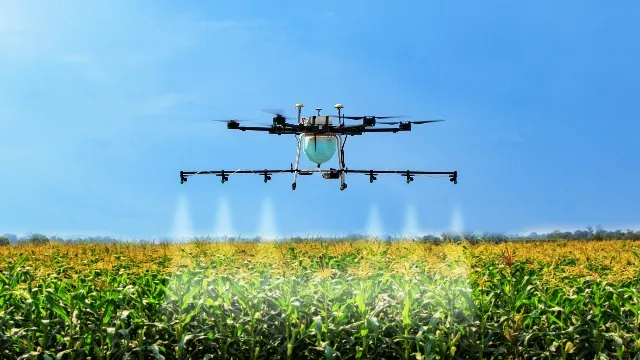
Application of Drones in Agriculture in India
India’s economy is mainly based on agriculture. For the majority of rural households, agriculture continues to be their primary source of income. The agricultural products that make up a sizable share of India’s exports also significantly impact the country’s economy.
Agriculture is still far behind in technological development, despite the industry’s growing importance. The leading causes of this situation have been crop loss brought on by unfavourable weather and unchecked pest problems. Additionally, Indian farmers still rely on the monsoon rains for irrigation and employ traditional techniques for other aspects of farming. Because of this, despite farmers’ tireless efforts, the quality and quantity of agricultural produce are occasionally impaired.
Thankfully, there is yet hope. What if crop failure could be predicted beforehand, allowing for the appropriate action to be taken? Can the issues plaguing India’s agricultural industry be solved by combining traditional farming techniques with cutting-edge approaches like agri-drones? Can drones play a significant role in agricultural observation, improving the possibilities of failure mitigation? Let’s examine.
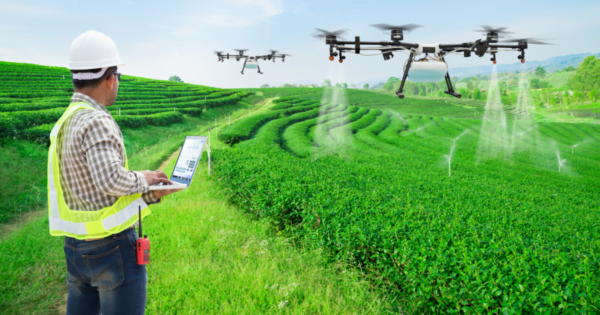
Drones and the Indian agriculture industry
Unmanned aerial vehicles, or drones, are used for surveillance across various industries. Until recently, they were mostly utilised by businesses in the mining and construction industries, the military, and amateurs.
But now that drone technology is more widely accessible; it may also be used in a number of agricultural areas. Though the technology is still in its infancy in India, numerous businesses are working to make it freely accessible to Indian farmers and prepared for use to boost agricultural production efficiency.
The Use of Agri-Drones is on the Rise
In India, there are numerous drone-based agricultural projects in progress. Think about the following instances from daily life:
- On January 26, 2022, the Indian government also unveiled a certification programme for agricultural drones, allowing them to carry a payload devoid of the pesticides and other liquids typically employed in drone spraying operations. By abiding by the relevant laws and regulations, such liquids may be sprayed.
- The Indian government recently offered the Farm Machinery Training and Testing Institutes, ICAR Institutes, Krishi Vigyan Kendras, and State Agriculture Universities a 100 per cent subsidy up to March 2023, whichever is less, to encourage the use of drones for agricultural purposes and lessen the labour burden on farmers.
- In addition, a reserve budget of Rs. 6000 per hectare would be established for leasing drones from specialised hiring facilities (CHC). The farmers will be able to acquire and use this sophisticated technology at a low-cost, thanks to the subsidy and the emergency money.
- On November 16, 2020, the Indian government approved using drones for agricultural research by the International Crops Research Institute (ICRISAT). The government hopes that by taking this action, it will inspire aspiring scientists and business people to consider low-cost drone solutions for the more than 6.6 lakh Indian villages. Despite the usage being conditional, it is nonetheless an innovative move.
According to Amber Dubey, Joint Secretary, Ministry of Civil Aviation, drones are anticipated to have a significant impact on agriculture, particularly in the fields of precision agriculture, agricultural yield increase, and locust management.
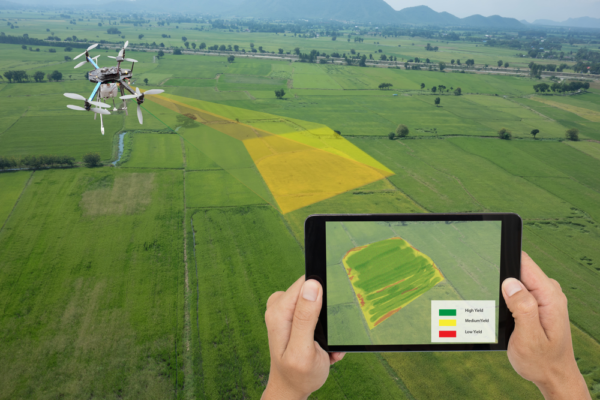
Benefits of Using Drones in Agriculture
The use of drone technology in agriculture is here to stay.
Recent studies predict that the worldwide drone market for agriculture will expand at a CAGR of 35.9 per cent and reach $5.7 billion by 2025.
Agriculture will continue to use drone technology. This new technology can help farmers work more efficiently and in less time. As the business develops, the usage of drones in agriculture is only anticipated to increase; thus, it is wise to learn how to use this technology responsibly.
-
Soil and field analysis
Agricultural drones can analyse soil and fields for effective field planning. They can be used to mount sensors that measure soil moisture, terrain, soil conditions, soil erosion, soil nutrient concentration, and soil fertility.
-
Crop monitoring
Crop surveillance is monitoring a crop’s development from the time the seeds are sown until the crop is ready to be harvested. This includes timing the application of fertilisers, keeping an eye out for pest infestations, and tracking the impact of weather. The only way a farmer can guarantee a timely harvest, particularly when working with seasonal crops, is through crop surveillance.
Crop failure could come from any mistakes made at this point. The upcoming farming season can be understood and planned for with the use of crop surveillance. By using infrared cameras to scan the field, drones can aid in efficient crop surveillance. Farmers can then act on the information they receive in real-time to improve the health of the plants there.
-
Plantation
Plantation drones can assist in planting crops and trees; a task previously carried out by farmers. This technology will assist save on both labour costs and gasoline costs. Budget-friendly drones are anticipated to replace bulky tractors in the near future because they degrade the environment and release dangerous gases.
-
Livestock management
Large cattle can be monitored and managed by drones because they have high-resolution infrared cameras built into their sensors, which can quickly identify sick animals and take appropriate action. Consequently, the effect of drones on precise dairy production will soon become the new norm.
-
Crop spraying
When compared to conventional methods, agri-drones can spray chemicals on crops quickly since they have reservoirs that can be replenished with fertilisers and insecticides. Therefore, drone technology can potentially bring a new era of precision farming.
- Check crop health
A lot of land is used for farming, which is a large-scale operation. Regular surveys are required to keep track of the condition of the soil and the crop that has been planted. Manually, this could take days; even then, the human mistake is possible. In a few of hours, drones can complete the same task. Drones can use infrared mapping to collect data on the condition of the crop and the soil.
-
Avoid overuse of chemicals
Particularly when it comes to decreasing the abuse of herbicides, insecticides, and other chemicals, drones can be quite useful. These substances do, in fact, aid in crop protection. However, using them excessively can be harmful. Drones are able to identify even the tiniest indicators of pest infestations and provide precise information on the intensity and territory of the attack. This can assist farmers in determining the necessary dosage of chemicals to employ so that the crops are only protected, not harmed.
-
Prepare for weather glitches
Both a farmer’s best friend and the worst enemy might come in the form of the weather. It is pretty challenging to get ready for any change in patterns because they cannot be precisely foreseen. Future weather conditions can be predicted using drones. Better forecasts are already being made using storm drones. Farmers can also use this information to prepare themselves better. Planning the crop to plant that would be ideal for the season and how to care for planted crops afterwards can be done with the help of early warning of storms or lack of rain.
-
Monitor growth
Crops need to be surveyed and monitored even when everything is going according to plan to ensure the proper yield is available when it’s time to harvest. It is crucial for planning the future, whether it is for picking cyclical crops or figuring out the best pricing for the open market.
Drones can deliver precise information on every stage of crop growth and can alert farmers to any differences before they turn into a disaster. Additionally, multispectral imaging can accurately reveal minute distinctions between healthy and ill crops that the naked eye can overlook. For instance, stressed crops will reflect less near-infrared light compared to healthy crops. The human eye may not always be able to see this distinction. But in the early stages, drones can supply this information.
-
Geofencing
Drones equipped with infrared cameras can quickly identify people or animals. Therefore, drones can protect the fields from external animal damage, especially at night.
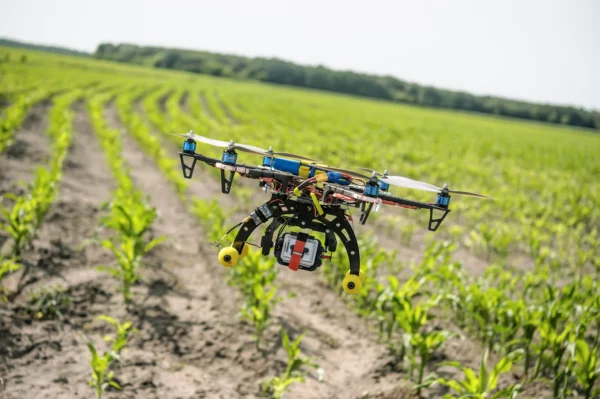
Benefits of agri-drones
- Security
Drones are flown by trained drone pilots. Therefore, there is no possibility of misuse.
- High efficiency
Drones operate instantly and can do tasks twice as quickly as humans.
- Water conservation
Agricultural drones use ultra-low volume spraying technology in place of conventional spraying techniques, saving more water as a result.
- Low cost and easy to maintain
Agri drones are reliable, inexpensive, and require little upkeep. A detachable container, an affordable frame, and precision pesticide spraying are a few important qualities.
Limitations of Agri drones
- Connectivity issue
Online availability is frequently nonexistent in rural places. In such cases, a farmer must make an investment in internet connectivity, which can turn into an ongoing expense.
- Weather dependent
The right weather is crucial for drone operations. Drone flight is not advised while it is raining or windy outside.
- Knowledge and Skill
Utilising new technology is a welcome shift, but doing so regularly calls for the appropriate skill set and knowledge. The typical farmer could find it difficult to comprehend how a drone works. He must either gain the knowledge or continue to rely on an expert.
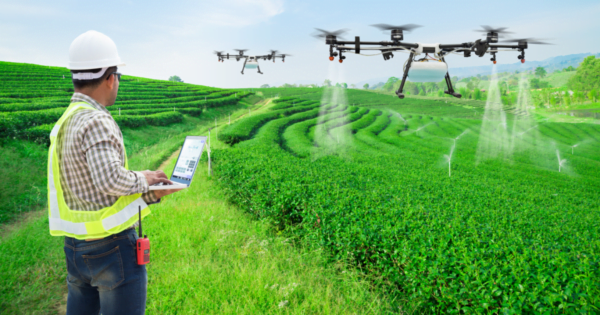
Wrapping Up
In the longer term, drone technology will transform the agricultural industry. Numerous Indian startups are also expressing interest in the sector. They intend to invest in affordable drones that may benefit farmers while providing employment possibilities for rural youngsters and advancing farmers’ expertise.
However, the sector requires comprehensive reforms that consider the demands of farmers, the ageing population, operating guidelines, and the declining acreage. In addition, skilled pilots are needed to expand the drone industry, which is still in its infancy. The change-bearers are our farmers and drone pilots. Overall, it will be interesting to see how things develop and how practical drone uses to prove to be over time.
edited and proofread by nikita sharma






